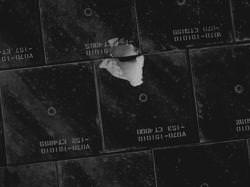With a detailed mock up in hand of the damaged region on the shuttle Endeavour’s underside, NASA engineers have been submitting the area to rigorous tests and computer simulations. Good news. From what they can tell so far, the spot probably isn’t a risk to the safety of shuttle during its reentry, and astronauts probably won’t even need to make repairs.
To perform their experiments, engineers created a duplicate of Endeavour’s damaged section, and then put it into an arc jet. This is a room-sized blowtorch that recreates the conditions of reentry on the shuttle’s tile system. Even though the temperature on the surface of the tiles reached 1090 degrees Celsius (2,000 degrees F), the temperature on the bottom of the gouge only peaked at 170 degrees Celsius (340 degrees F). This is below the limits set by NASA.
However, even if the temperatures remain within tolerance levels, NASA would also want to avoid any lengthy and expensive repairs to the shuttle on the ground, and might get the astronauts to make the repairs. John Shannon, the chairman of the mission management team said on Tuesday that he was “cautiously optimistic” that no on-orbit repairs would be necessary.
As a point of comparison, the suitcase sized chunk of foam that dislodged, and ultimately destroyed the space shuttle Columbia weighed 750 grams (1.67 pounds), while Endeavour’s fragment is thought to be about 100 grams (3.5 ounces). Columbia’s foam strike was on the leading edge of the wing, which experiences some of the hottest temperatures of reentry, while Endeavour’s was down near the landing gear, on a region which is much cooler.
And if you really want to get to know the gouge. Check out this amazing video from NASA that has turned the damaged section into a 3-D animation. You might question their assessment of the risks, but wow, they really know the damage.

